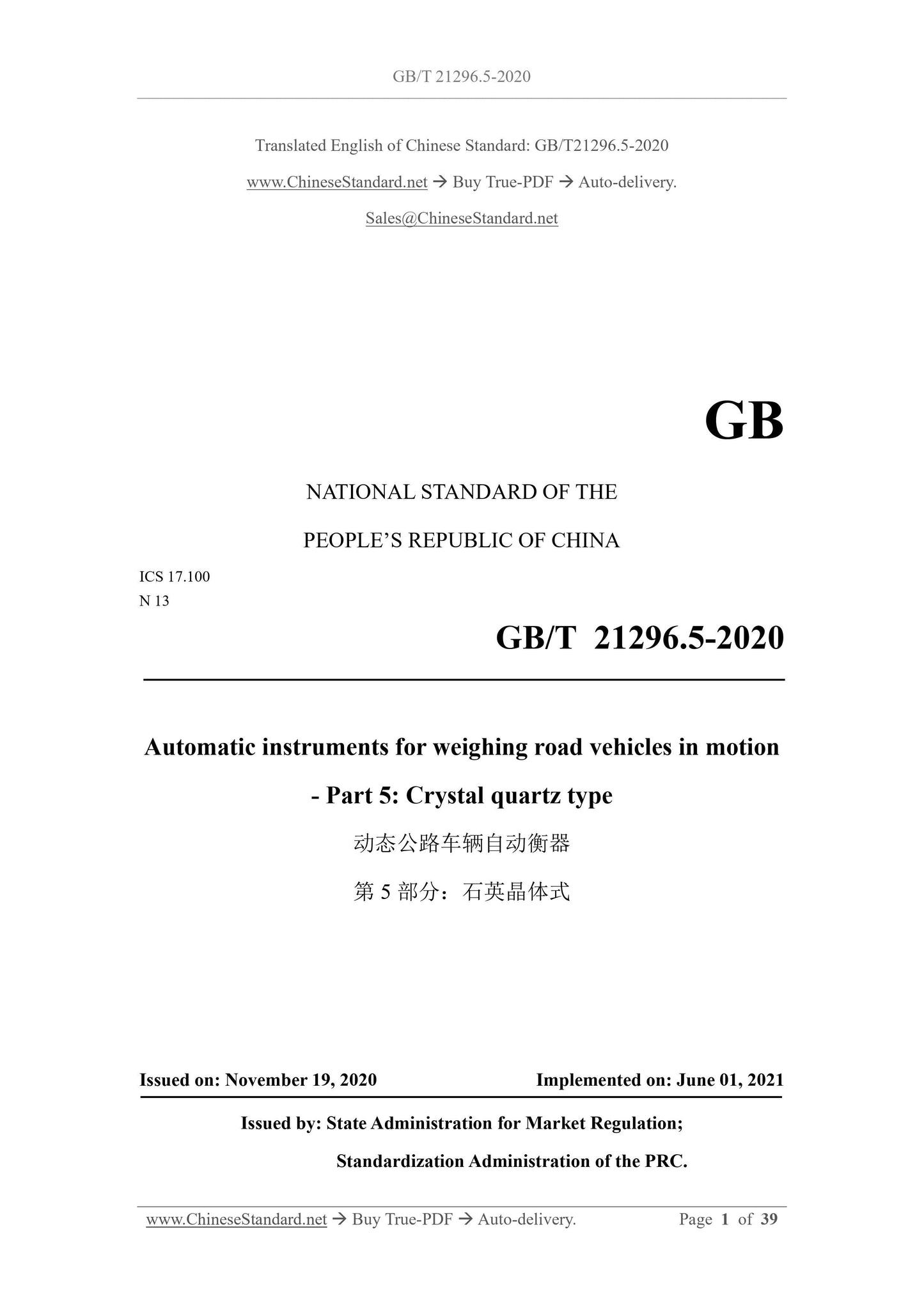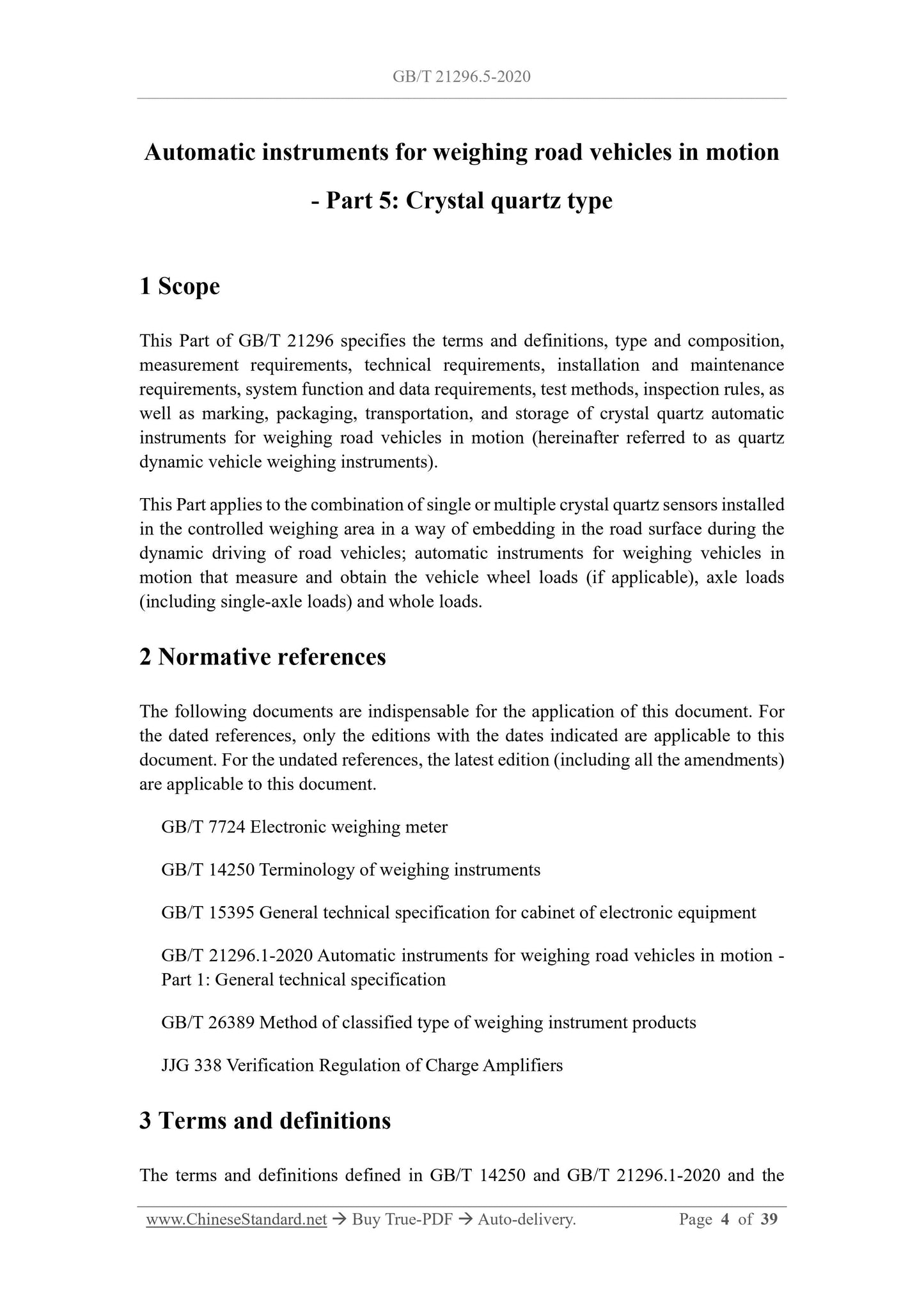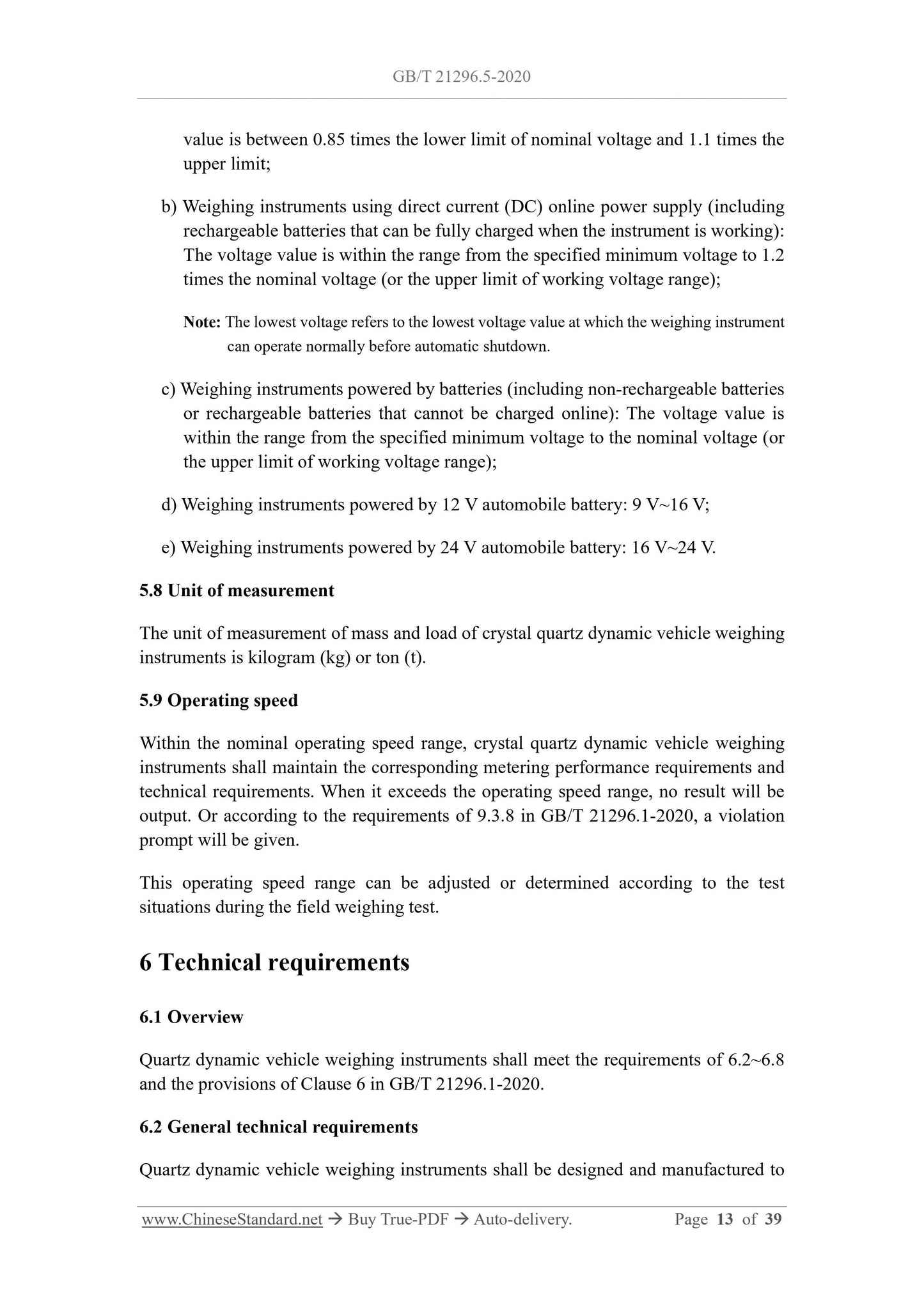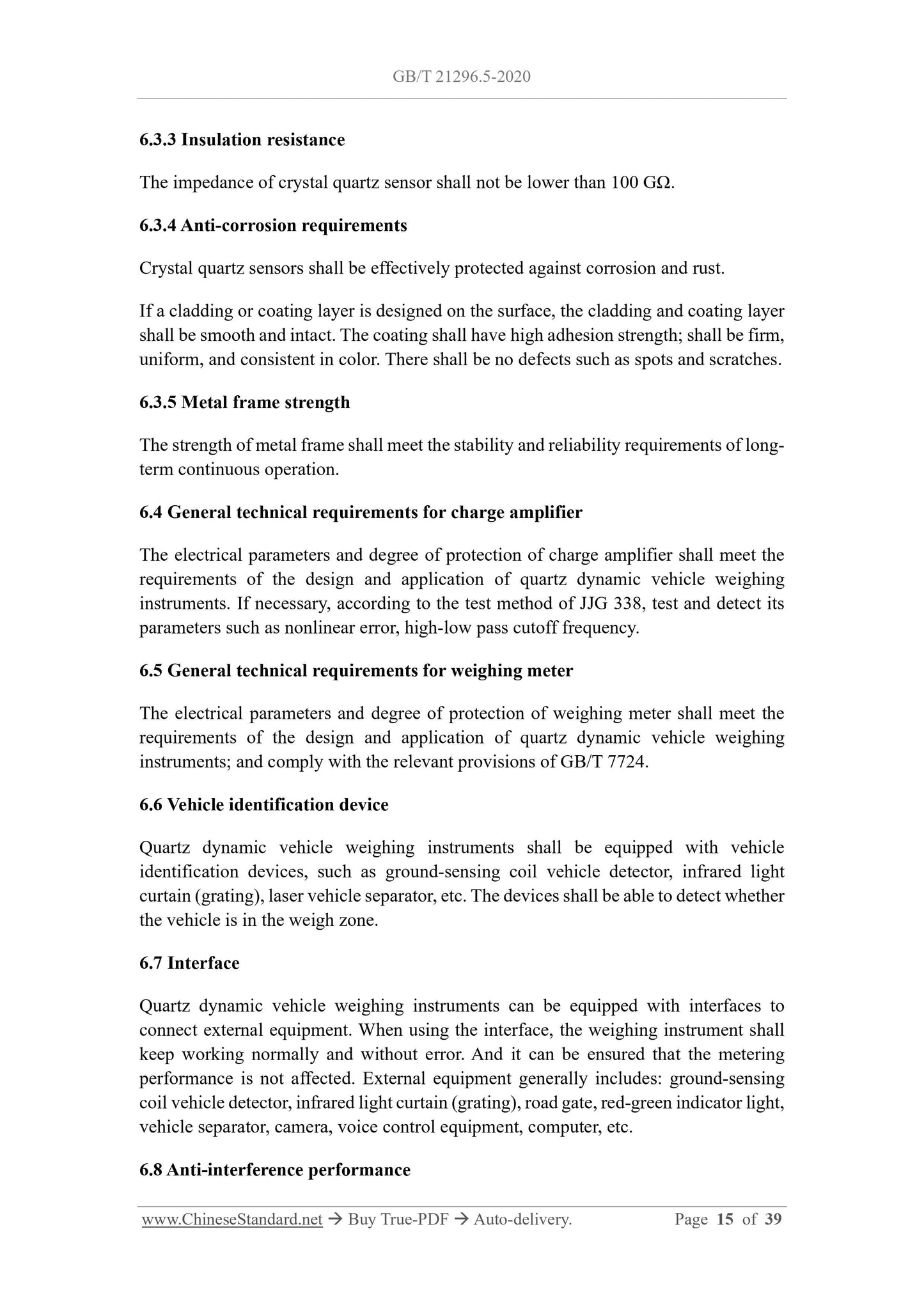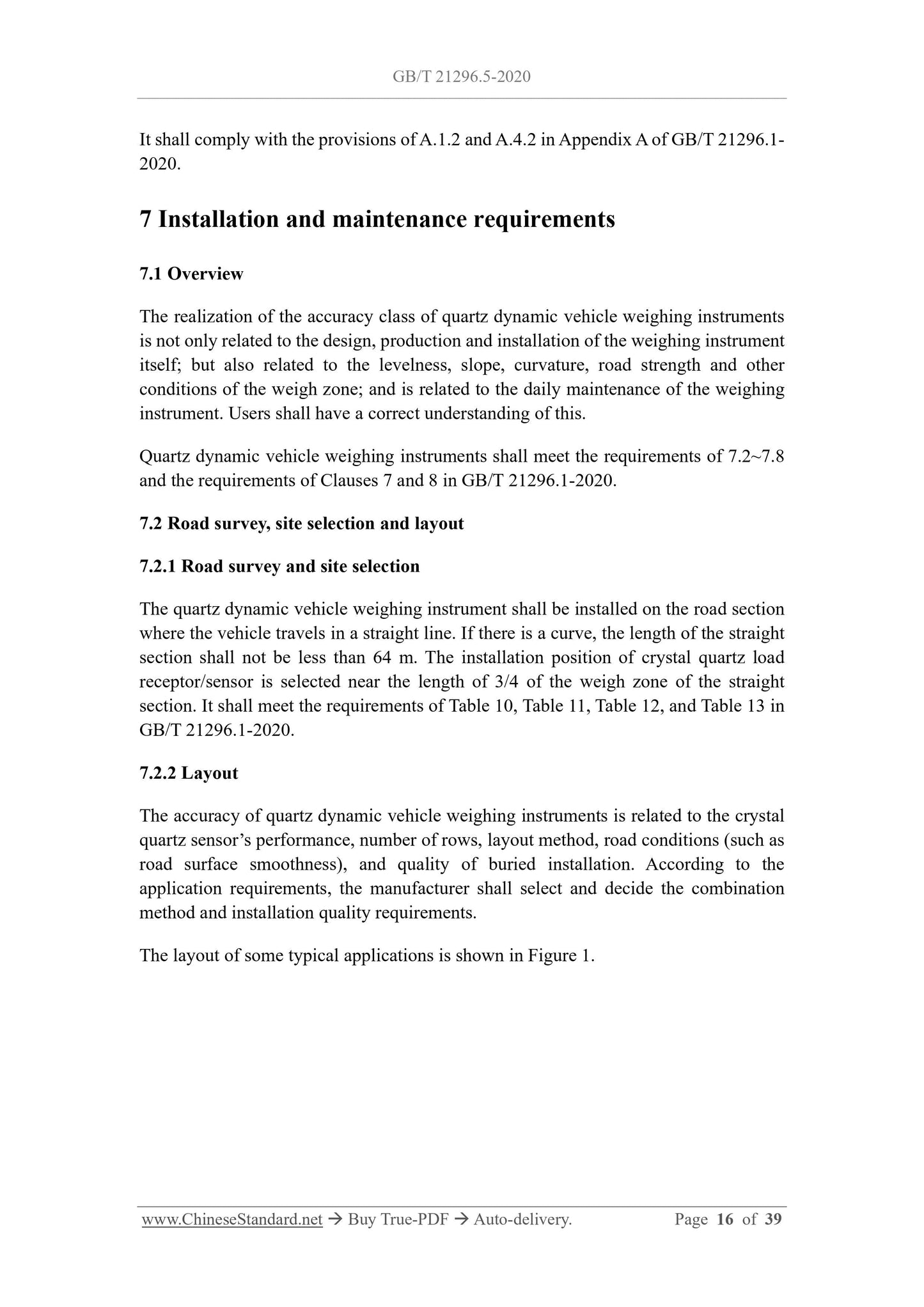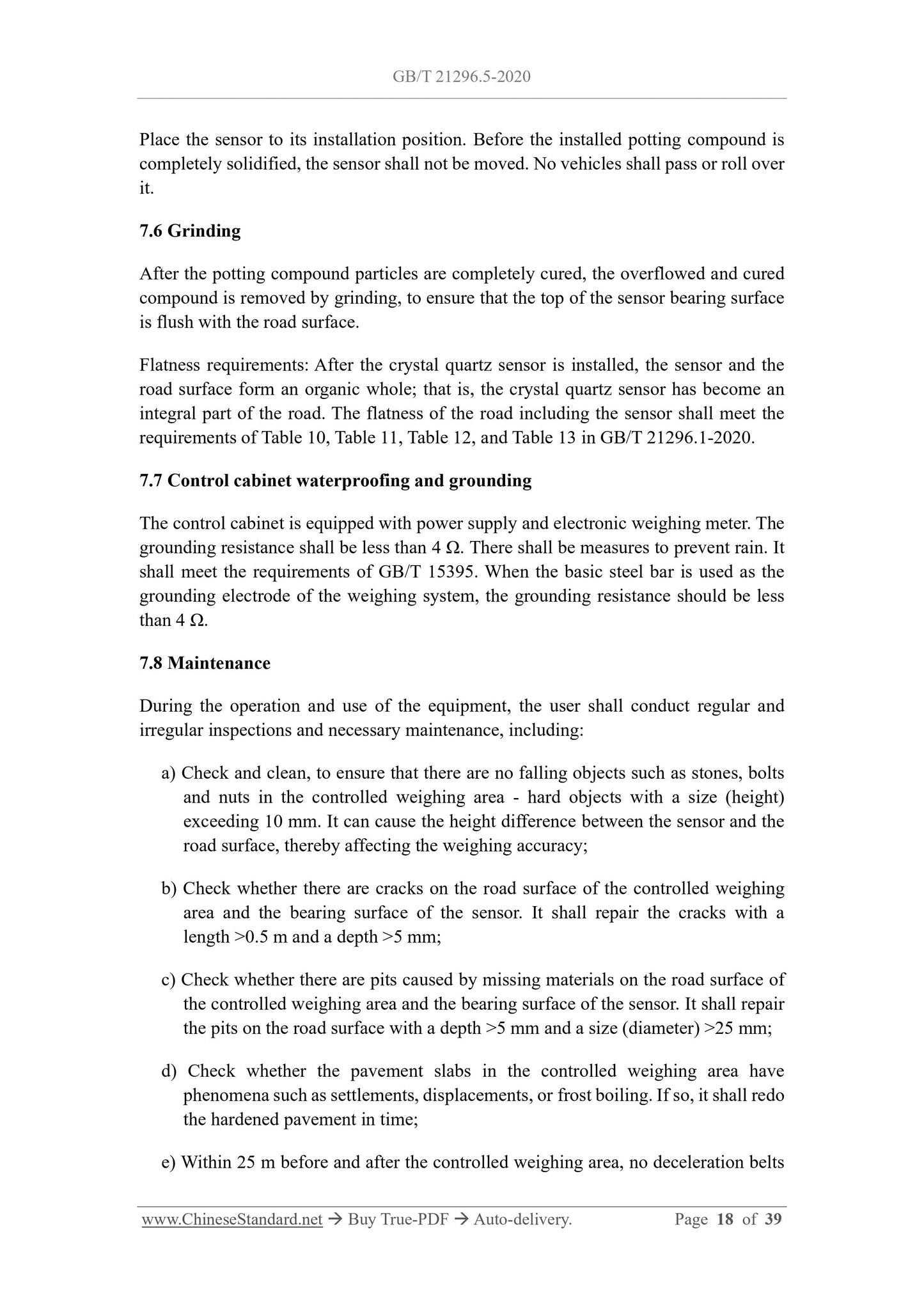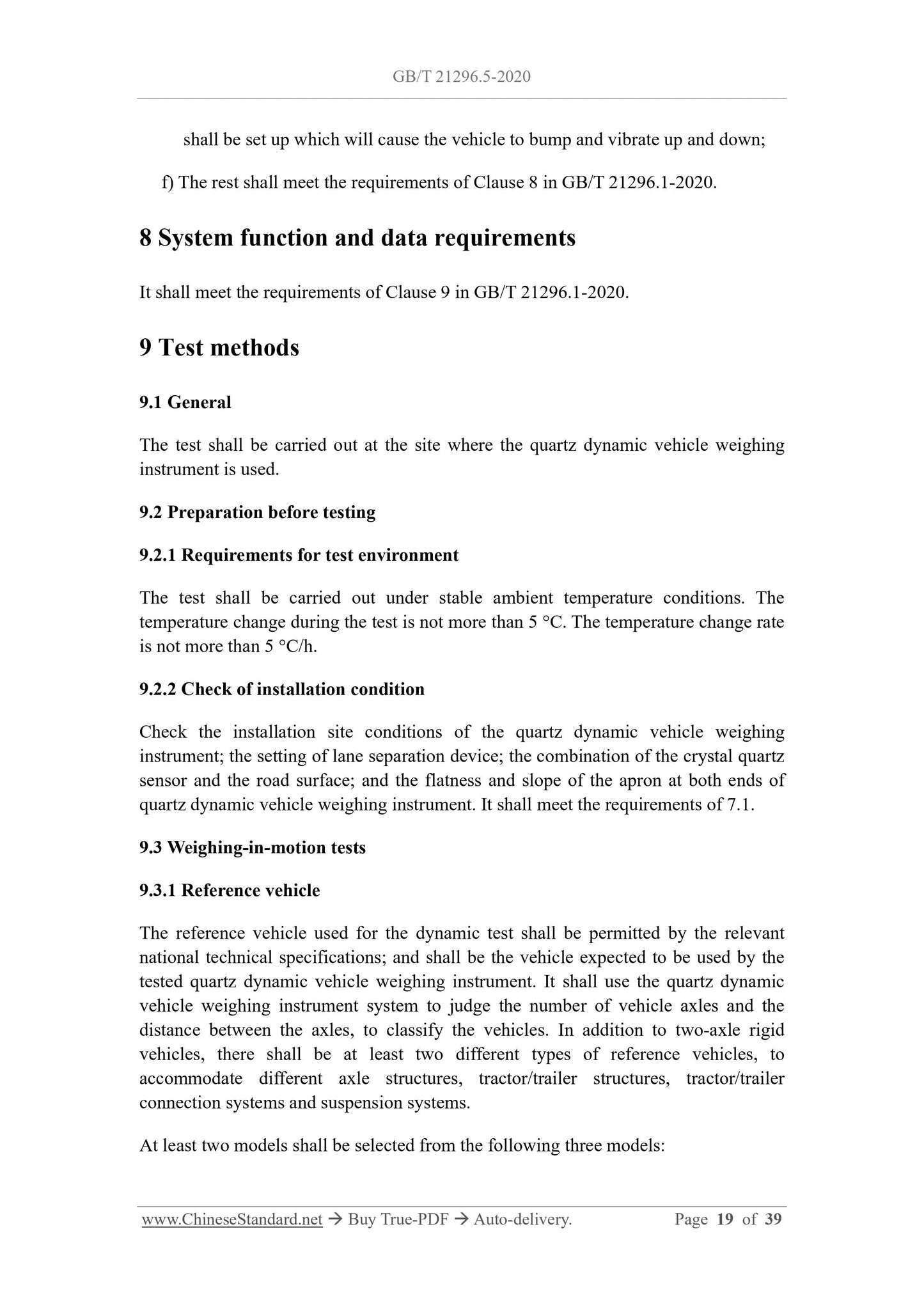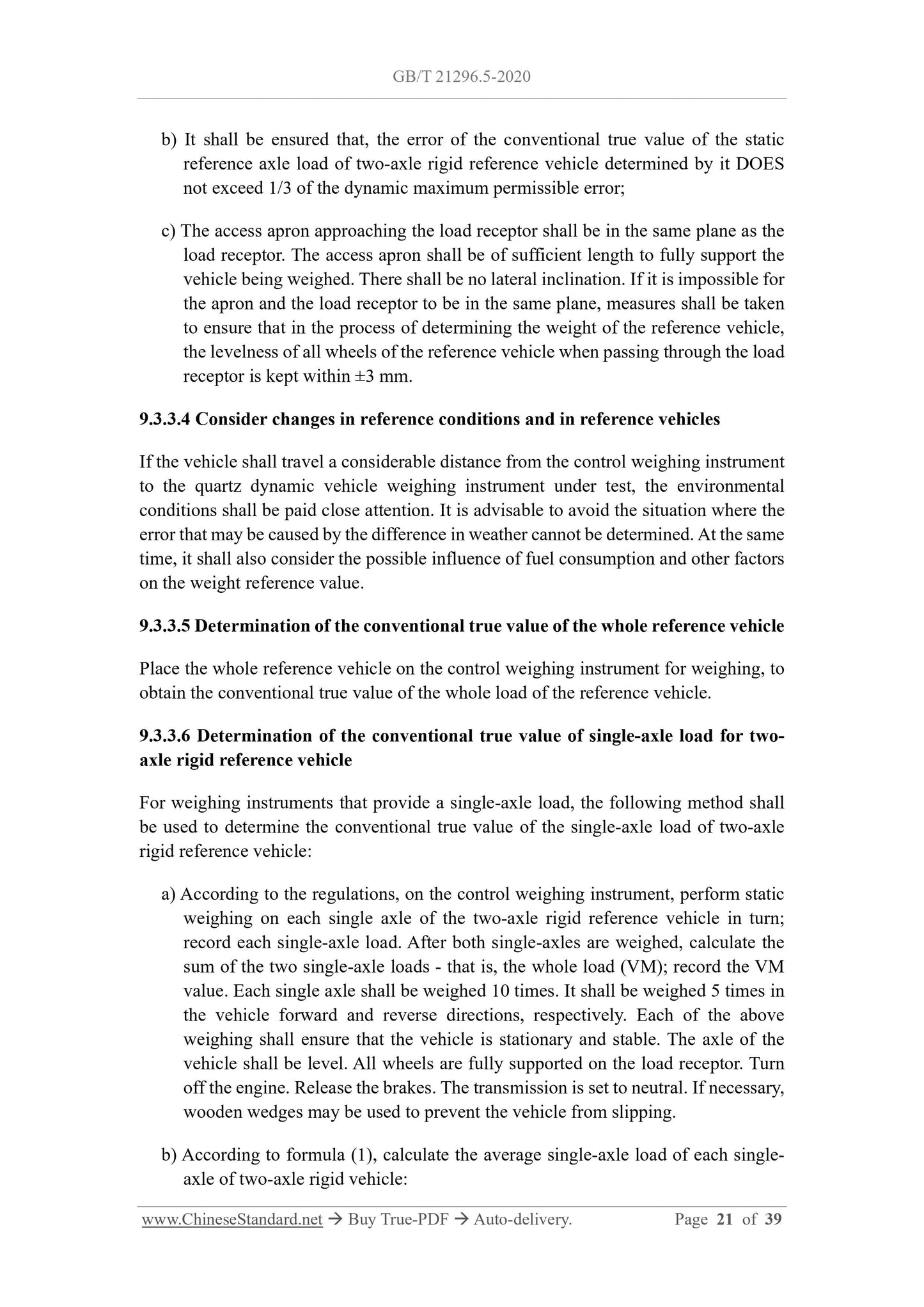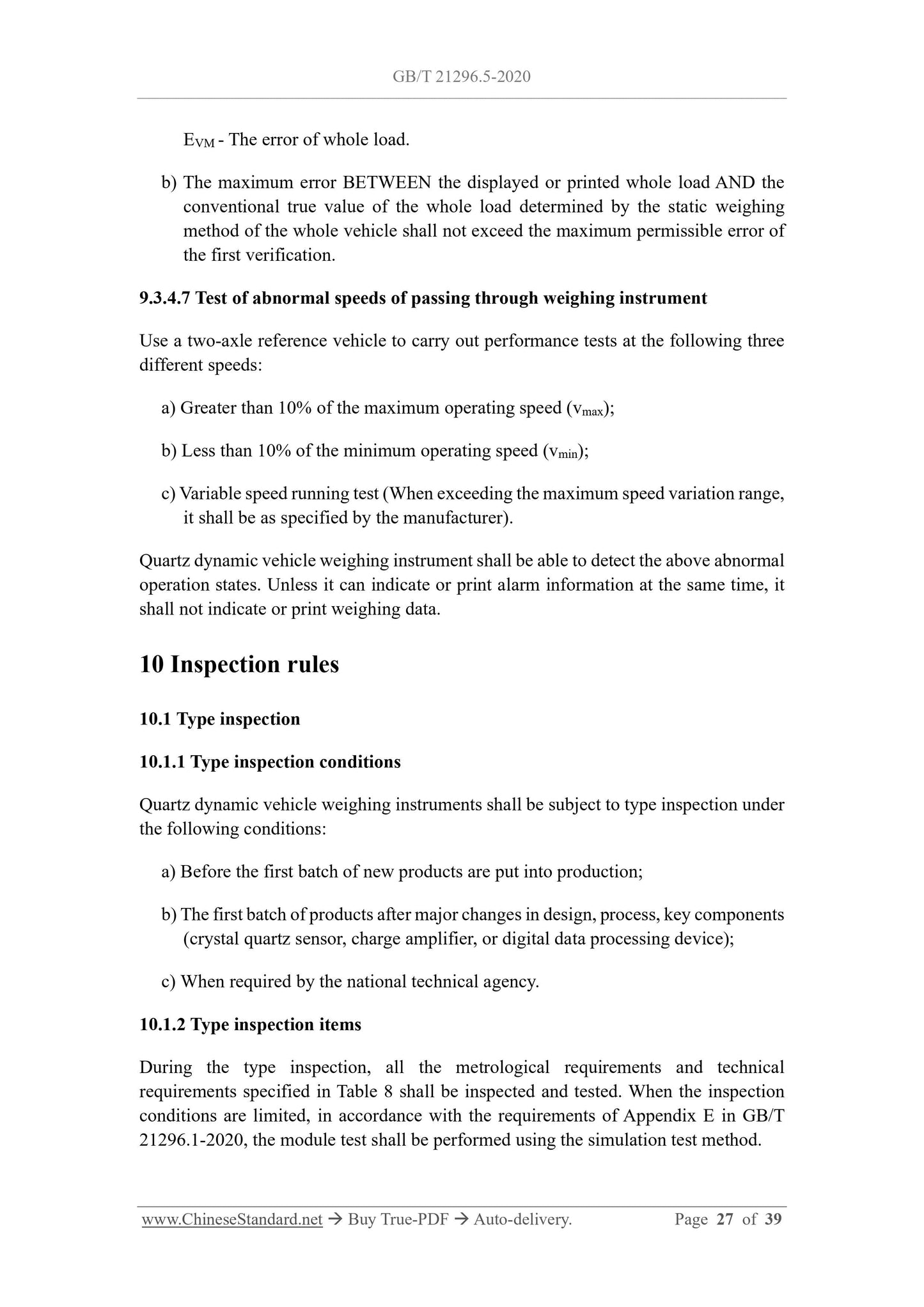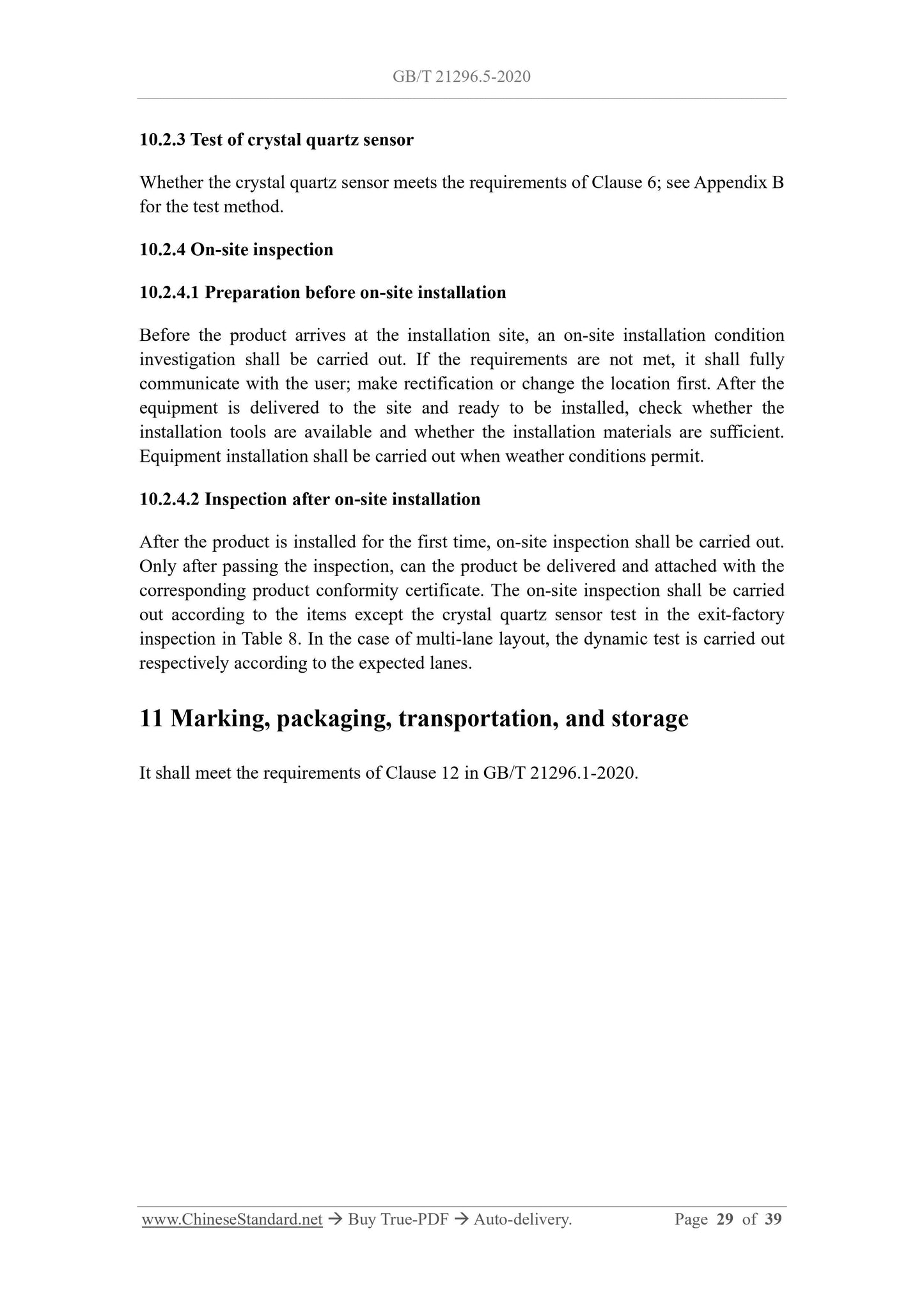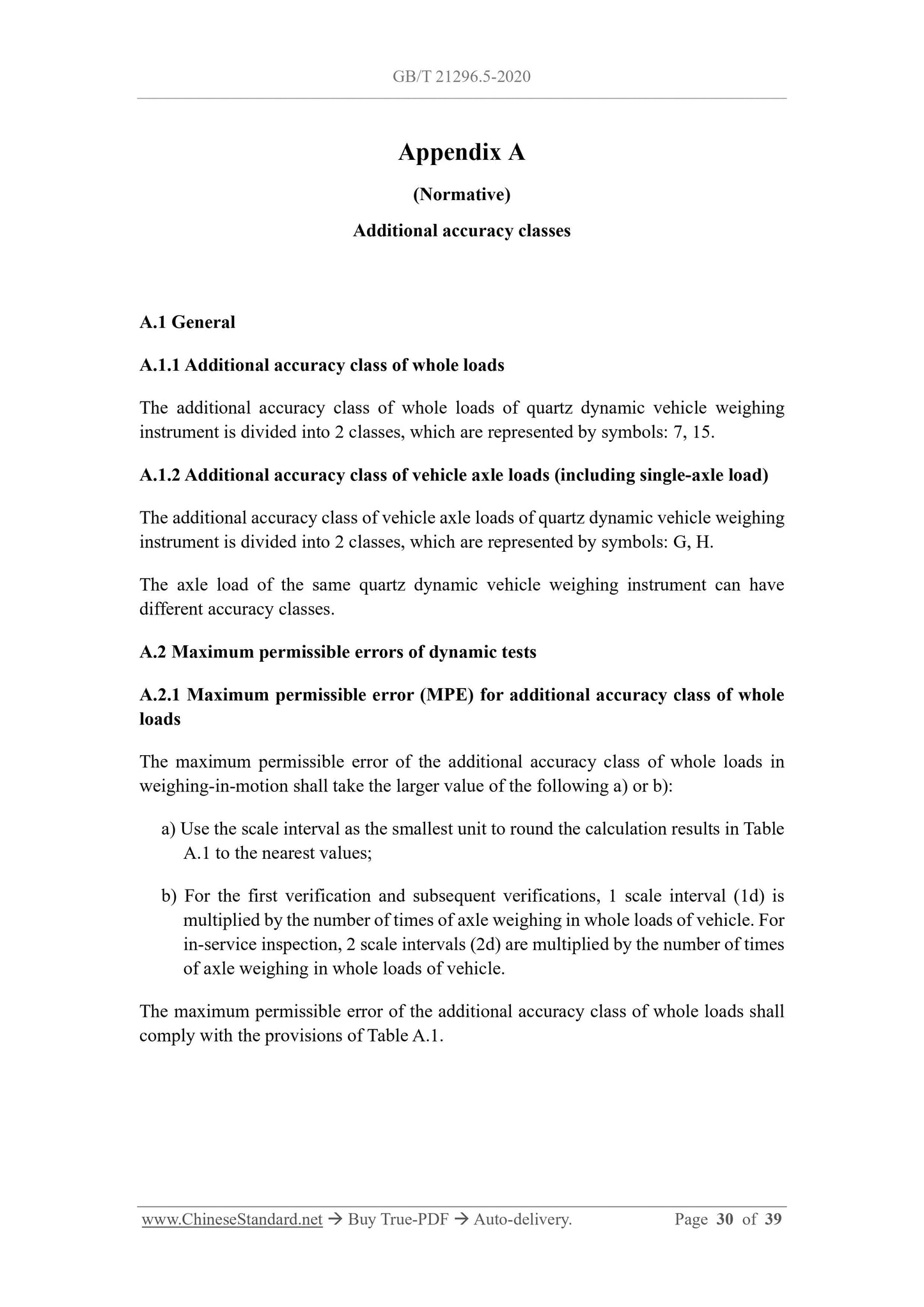1
/
of
12
www.ChineseStandard.us -- Field Test Asia Pte. Ltd.
GB/T 21296.5-2020 English PDF (GB/T21296.5-2020)
GB/T 21296.5-2020 English PDF (GB/T21296.5-2020)
Regular price
$440.00
Regular price
Sale price
$440.00
Unit price
/
per
Shipping calculated at checkout.
Couldn't load pickup availability
GB/T 21296.5-2020: Automatic instruments for weighing road vehicles in motion - Part 5: Crystal quartz type
Delivery: 9 seconds. Download (and Email) true-PDF + Invoice.Get Quotation: Click GB/T 21296.5-2020 (Self-service in 1-minute)
Newer / historical versions: GB/T 21296.5-2020
Preview True-PDF
Scope
This Part of GB/T 21296 specifies the terms and definitions, type and composition,measurement requirements, technical requirements, installation and maintenance
requirements, system function and data requirements, test methods, inspection rules, as
well as marking, packaging, transportation, and storage of crystal quartz automatic
instruments for weighing road vehicles in motion (hereinafter referred to as quartz
dynamic vehicle weighing instruments).
This Part applies to the combination of single or multiple crystal quartz sensors installed
in the controlled weighing area in a way of embedding in the road surface during the
dynamic driving of road vehicles; automatic instruments for weighing vehicles in
motion that measure and obtain the vehicle wheel loads (if applicable), axle loads
(including single-axle loads) and whole loads.
Basic Data
| Standard ID | GB/T 21296.5-2020 (GB/T21296.5-2020) |
| Description (Translated English) | Automatic instruments for weighing road vehicles in motion - Part 5: Crystal quartz type |
| Sector / Industry | National Standard (Recommended) |
| Classification of Chinese Standard | N13 |
| Classification of International Standard | 17.100 |
| Word Count Estimation | 27,232 |
| Date of Issue | 2020-11-19 |
| Date of Implementation | 2021-06-01 |
| Quoted Standard | GB/T 7724; GB/T 14250; GB/T 15395; GB/T 21296.1-2020; GB/T 26389; JJG 338 |
| Regulation (derived from) | National Standard Announcement No. 26 of 2020 |
| Issuing agency(ies) | State Administration for Market Regulation, China National Standardization Administration |
| Summary | This standard specifies the terms and definitions, model and composition, measurement requirements, technical requirements, installation and maintenance requirements, system functions and data requirements, test methods, and inspections of quartz crystal dynamic road vehicle automatic weighing instruments (hereinafter referred to as quartz dynamic truck scales) Rules and signs, packaging, transportation and storage. This standard is applicable to a combination of single or multiple quartz crystal sensors installed in the weighing control area in the way of embedded road vehicles during dynamic driving of road vehicles to measure and obtain vehicle wheel load (if applicable), axle load (including single Axle load), and dynamic road vehicle automatic weighing instrument for total vehicle weight. |
Share
